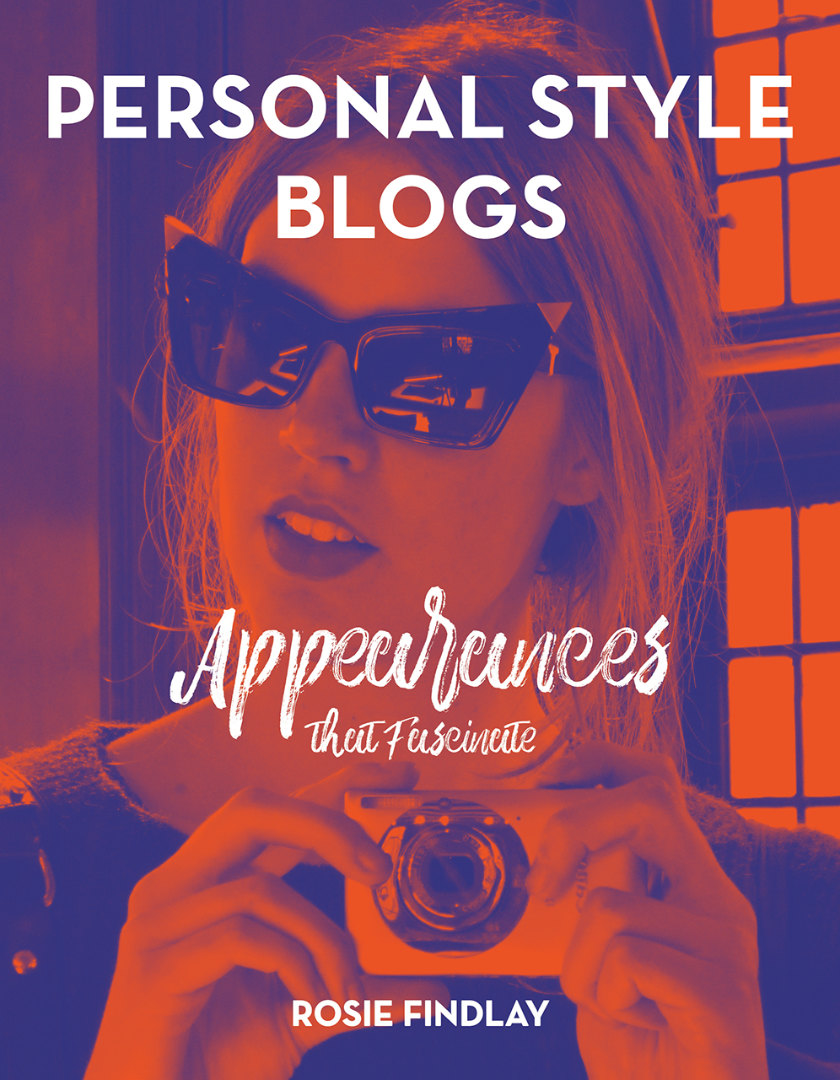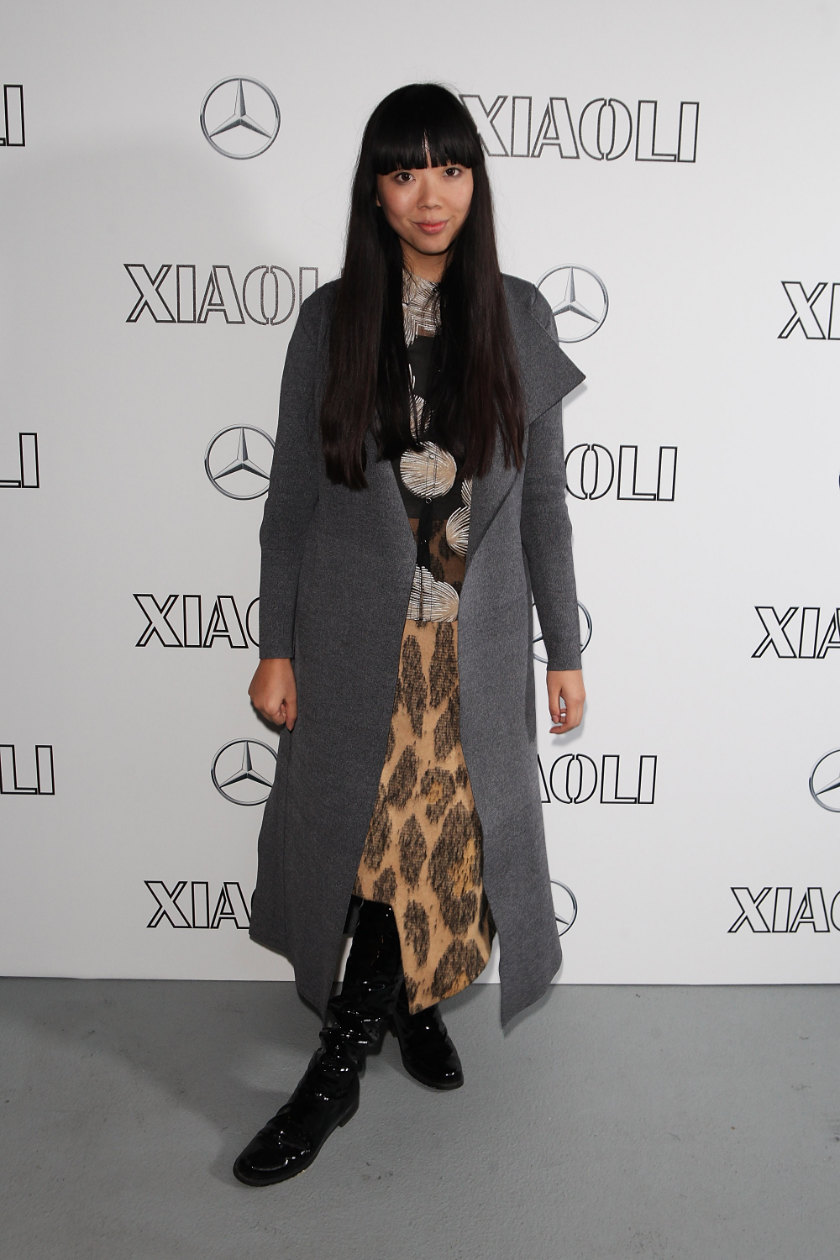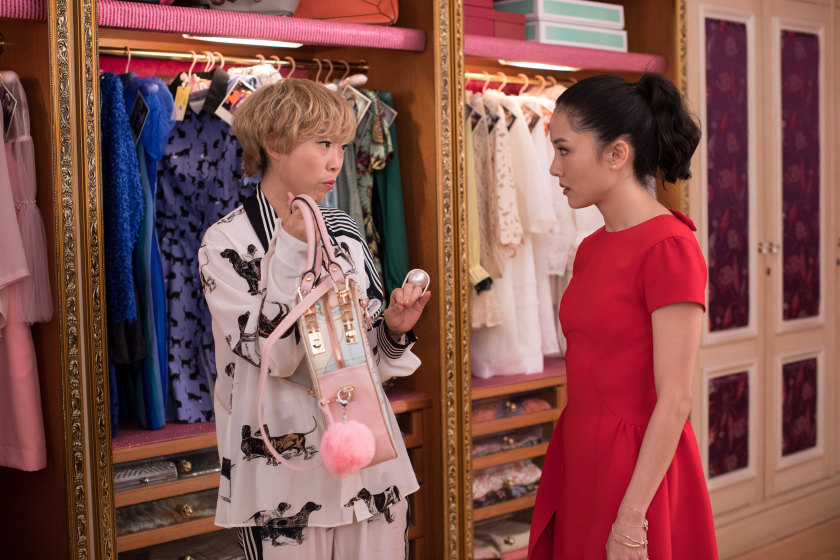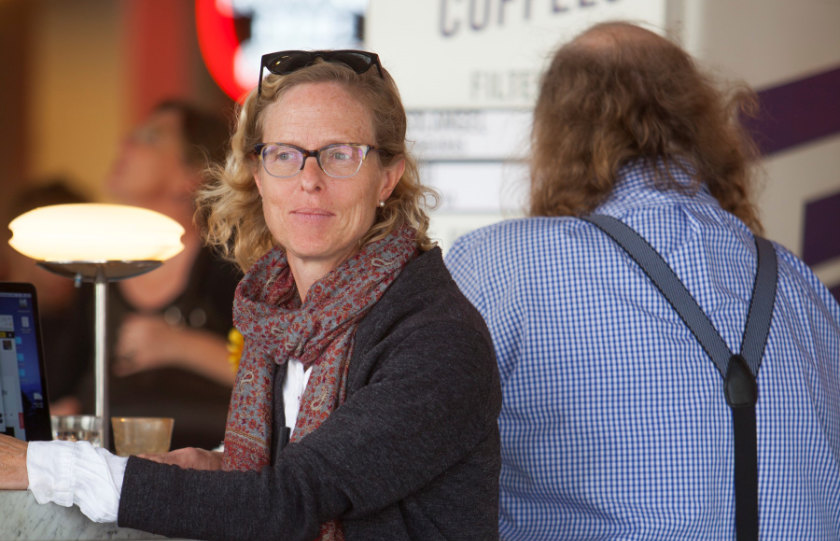
LIVING Rosie Findlay’s Personal Style Blogs is an in-depth analysis of the fashion blogosphere. In a counterpoint to our earlier story, Jack Yan considers her book
From issue 38 of Lucire
 David M. Benett
David M. Benett
Above: Style Bubble’s Susie Lau at the Xiaoli autumn–winter 2016 collections.
Jack Yan is publisher of Lucire.
Don’t be so fast in writing influencers off just yet, at least not those who blog about fashion, the subject of Rosie Findlay’s well considered Personal Style Blogs: Appearances That Fascinate (published by Intellect, 2017; £25). Findlay traces the origins of fashion weblogs at the turn of the century and puts them all in the context of history and the fashion industry. It’s a remarkable analysis, properly referenced throughout, and highly recommended to those trying to navigate and understand the fashion blogosphere. Its chief down side has to be the very wide setting of the Minion body type and its lack of leading; the graphics have not been reproduced sufficiently clearly, either, the consequence of having to resort to screen shots (which are, by nature, low-resolution) to illustrate the author’s examples.
Susie Lau of Style Bubble, who has been blogging since 2006, is quoted extensively—in many ways, Lau’s journey through the blogosphere with her very highly regarded blog (one we linked from very early on in its life) helps tell the history of fashion blogging itself, from its personal origins (Lau’s wardrobe, everyday life and her own photographs) to something resembling fashion reporting with high-resolution and very sharp photographs. The democratization of technology has helped, but then, Lau’s own photographic skills have grown alongside her writing. However, as Findlay points out, what marks out a blogger is that they are, by definition, subjective; and they have built communities whose audiences relate to them well.
She points out there have been two waves of blogging: the first wave, with its slightly outsider approach, knowing that they are commenting on fashion as personal expression; and a second wave that happened at the turn of the decade was more focused on the commercial aspect, making blogging pay, a group that is not always respected by the first wave.
It’s not as though the first wave didn’t receive promotional consideration from “partners” in the business, but it was never their motive to begin with—and as blogger Jessica Quirk of What I Wore (2008–17, also quoted extensively in the book) pointed out to Findlay, no one budgeted for paying bloggers anyway.
But when labels and the media began embracing them—including many whose readership was never as great as was claimed—they suddenly became more mainstream, occupying seats usually reserved for publications whose circulations were far greater. They were, at one point, the flavour of the month, not necessarily beloved by the establishment.
Vogue Italia’s former editor-in-chief, the late Franca Sozzani, wrote in 2011 (ironically on her magazine’s own blog), ‘There are many questions about the invasion of fashion bloggers. Why are they so credited? Why do they sit in front row? Why does the Chamber of Italian Fashion thinks so highly of them, so much as to provide them with a driver during the shows as it’s happened during menswear?
‘Are they important for Vogue? Do we need all these bloggers? They don’t offer an opinion but only talk about themselves, take their own pictures wearing absurd outfits. What’s the point? I don’t even know who they are except a few names because they are so many and all the same, they are so worried about what to wear to get noticed that my eyes only see a crowd in the end.’
Sozzani saw bloggers as fleeting, and was clearly unimpressed; but Findlay makes a case for them, framing it more widely. Many fashion bloggers are young women and the technology has empowered more to express themselves, contrary to a 19th-century expectation that women who expressed their opinion were somehow giving up their femininity; that men have more licence even in modern society to express themselves, while women are subject to greater criticism when they do.
Such is the depth of Findlay’s research that she even looks at the original rise in photography in fashion magazines under Thomas Condé Nast, to enhance fashion’s desirability, and drawing a parallel with photos on blogs—while noting that second-wave bloggers will wear sponsored outfits to create an illusion, and recommend people shoot for the unattainable, a performance of the self. All fashion photography has an element of fantasy, which you don’t shatter with showing off the hard work behind the scenes.
She also charts the shift in blogging, from a more one-to-one relationship in the mid-2000s to a one-to-many, with only the occasional feedback if a reader felt like responding. Social networks have changed how we consume fashion. Nevertheless, Findlay convincingly argues that blog communities are a valid social entity, one that the industry should accept as being here to stay.
Many names that readers are familiar with appear, too, such as Bryanboy, Style Rookie and The Sartorialist: Findlay’s analysis is of the Anglophone blogosphere.
Blogs open up more avenues with which the public can engage with fashion, and will, therefore, have a place, regardless of the medium used—including Instagram accounts that accompany them today. The ‘circus of fashion’, says Findlay, will go on, and the profession will include some and exclude others, as it has always done. There are no real signs that the blogosphere is weakening, certainly not when Findlay wrote her words in 2016, but those with real staying power—e.g. Lau—are only there because of their continued hard work. On that note there’s accord between the subjects of Personal Style Blogs and our opening feature; but Findlay isn’t prepared to write off the influencers’ phenomenon, at least not the pure bloggers. •
Related articles hand-picked by our editors

The fall of the influencer
Lucire predicted the rise of the social influencer many years ago. But now that such ideas have mainstreamed, we’re less optimistic about their staying power—by Jack Yan and Portia Gascoigne
From issue 38 of Lucire

Awkwafina: working among crazy rich Asians
Rapper and actress Awkwafina plays Peik Lin in the summer hit Crazy Rich Asians. We sit down with her to ask about her experiences on the film, whether she saw any real-life crazy rich Asians, and what it was like working with Constance Wu and director Jon M. Chu

Bowled over!
Los Angeles Times’ food editor Amy Scattergood meets with Elyse Glickman to discuss why food festivals need to evolve to provide everybody a seat at the table
Advertisement
Copyright ©1997–2022 by JY&A Media, part of Jack Yan & Associates. All rights reserved. JY&A terms and conditions and privacy policy apply to viewing this site. All prices in US dollars except where indicated. Contact us here.